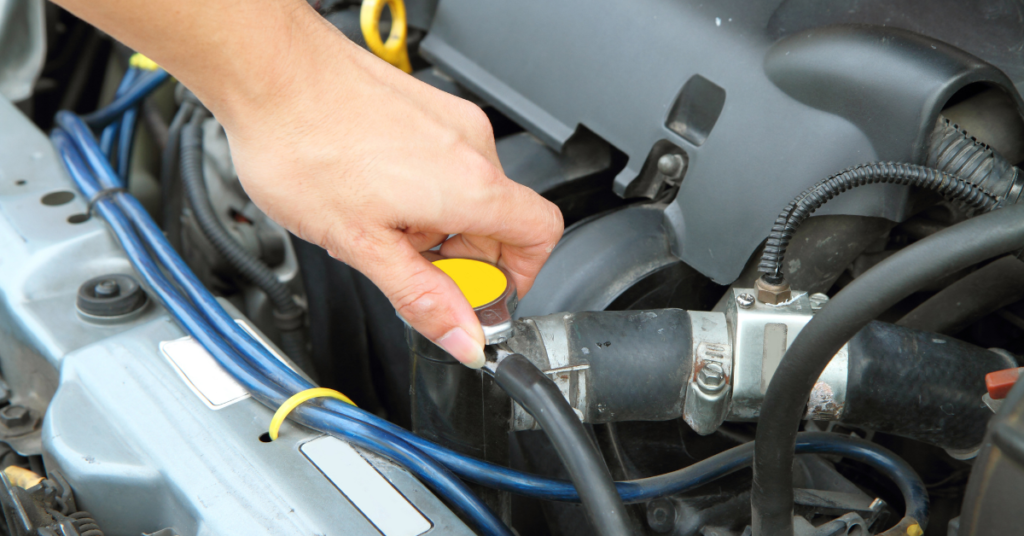
The P0430 Subaru code in vehicles is related to the catalytic converter system. When this code appears, it indicates that there is a malfunction in the catalyst efficiency of bank 2.
The catalytic converter plays a crucial role in reducing harmful emissions from the exhaust gases of your Subaru vehicle. In this article, we will take an in-depth look at the P0430 code, its causes, symptoms, and possible solutions.
Contents
Understanding the P0430 Subaru Code
The P0430 code specifically points to Bank 2, which indicates that the issue is with the catalytic converter on the passenger side of the engine. Bank 1 refers to the driver’s side.
This code is triggered by the vehicle’s onboard computer system, also known as the Engine Control Unit (ECU), when it detects that the catalyst efficiency on Bank 2 is below the expected threshold.
Bank 2 Catalytic Converter
The bank 2 catalytic converter is responsible for reducing the emission of harmful gases, such as carbon monoxide, nitrogen oxides, and hydrocarbons, from the exhaust gases of your Subaru vehicle. It is located on the passenger side of the engine.
When the catalyst efficiency of the bank 2 converter is below the expected threshold, it triggers the P0430 code. This indicates that the converter is not effectively converting these harmful gases into less harmful substances.
Importance of Catalytic Converter Efficiency
The catalytic converter plays a vital role in reducing air pollution by converting harmful gases into less harmful substances.
It contains a catalyst, usually made of platinum, palladium, and rhodium, which facilitates chemical reactions that convert carbon monoxide into carbon dioxide, nitrogen oxides into nitrogen and oxygen, and hydrocarbons into carbon dioxide and water vapor.
When the catalytic converter’s efficiency is compromised, it can lead to increased emissions, contributing to air pollution and potentially violating emission standards.
Impact on Vehicle Performance
A malfunctioning catalytic converter can also have a negative impact on your Subaru vehicle’s performance. When the converter is not functioning optimally, it can restrict the flow of exhaust gases, leading to reduced engine power and decreased fuel efficiency.
This can result in sluggish acceleration, rough idling, and increased fuel consumption. Therefore, addressing the P0430 code promptly is crucial to maintain the performance and fuel efficiency of your Subaru vehicle.
Common Causes of the P0430 Code
The P0430 code could be your diagnostic compass, pointing toward similar challenges in Subaru. Follow its guidance for a comprehensive understanding.
There are several potential causes for the P0430 code in Subaru vehicles. Understanding these causes can help in properly diagnosing and addressing the issue. Some of the most common causes include:
Catalytic Converter Failure
The catalytic converter may become clogged, damaged, or worn out over time. This can lead to decreased efficiency and trigger the P0430 code.
Common reasons for converter failure include excessive exposure to high temperatures, contamination from engine oil or coolant leaks, and the accumulation of carbon deposits.
Oxygen Sensor Issues
The oxygen sensors provide feedback to the ECU about the oxygen levels in the exhaust gases. Faulty oxygen sensors can provide inaccurate readings to the ECU, leading to a false detection of low catalyst efficiency. This can be caused by sensor aging, contamination, or wiring issues.
Exhaust Leaks

Leaks in the exhaust system can cause a pressure drop, affecting the performance of the catalytic converter. These leaks can occur due to corrosion, loose connections, or damaged gaskets.
Common areas for exhaust leaks include the manifold, exhaust pipes, and muffler.
Engine Misfires
Misfiring cylinders can result in unburned fuel reaching the catalytic converter, causing it to overheat and fail. Engine misfires can be caused by various factors, such as faulty spark plugs, ignition coils, fuel injectors, or engine timing issues.
Fuel System Problems
Issues with the fuel injectors, fuel pressure regulator, or fuel pump can disrupt the air-fuel mixture, affecting the catalytic converter’s efficiency.
Common fuel system problems include clogged injectors, low fuel pressure, or a malfunctioning fuel pressure regulator.
Symptoms of a P0430 Code
Peering into the P0420 code for you offers insights into a collective issue faced by cars across the industry—a challenge related to catalytic converter functionality.
When the P0430 code appears, you may experience the following symptoms in your Subaru vehicle:
Check Engine Light
The most obvious and common symptom is the illumination of the check engine light on the dashboard. The ECU detects the low catalyst efficiency on Bank 2 and triggers the check engine light to alert the driver of a potential issue.
Decreased Fuel Efficiency
A failing catalytic converter can lead to reduced fuel efficiency, resulting in more frequent visits to the gas station. This occurs as the compromised converter restricts the flow of exhaust gases, causing the engine to work harder and consume more fuel.
Rough Idling
You may notice rough idling or engine vibrations when the vehicle is stationary. This can be caused by an imbalanced air-fuel mixture due to the inefficient conversion of harmful gases by the catalytic converter.
Reduced Engine Performance
The engine may feel sluggish or lack power, especially during acceleration. This is a result of the restricted exhaust flow caused by the malfunctioning catalytic converter, leading to decreased engine performance.
Diagnosing and Fixing the P0430 Code
Proper diagnosis is essential to pinpoint the exact cause of the P0430 code. Here are the steps to diagnose and fix the issue:
Scan for Error Codes
Use an OBD-II scanner to retrieve the error code(s) from the ECU. The P0430 code will help you identify the problem area, but further diagnosis is necessary to determine the root cause.
Look for any additional codes that may provide further insight into the issue.
Inspect the Catalytic Converter
Visually inspect the catalytic converter for any signs of physical damage, such as cracks or leaks. Also, check for clogs or blockages that may hinder its performance.
Use a flashlight to examine the converter thoroughly. Pay attention to any unusual smells or sounds coming from the converter.
Check Oxygen Sensors
Test the oxygen sensors with a multimeter to ensure they are functioning correctly. Measure the sensor’s voltage output and compare it to the manufacturer’s specifications.
Replace any faulty sensors if necessary. It is advisable to replace both the upstream (pre-catalytic converter) and downstream (post-catalytic converter) oxygen sensors simultaneously for optimal performance.
Look for Exhaust Leaks
Inspect the entire exhaust system for leaks or loose connections. Start from the manifold and work your way towards the tailpipe. Look for signs of black soot around joints or connections, indicating potential leaks.
Repair or replace any damaged components as needed. Ensure that all connections are properly tightened.
Address Engine Misfires

If engine misfires are detected, diagnose and fix the root cause, such as faulty spark plugs or ignition coils. Check for spark plug fouling or signs of wear. Replace worn-out spark plugs and faulty ignition coils.
Perform a compression test to ensure proper engine cylinder compression.
Evaluate Fuel System
Test the fuel injectors, fuel pressure regulator, and fuel pump to ensure they are operating within the manufacturer’s specifications. Measure fuel injector resistance and inspect for any clogs or leaks.
Check fuel pressure using a fuel pressure gauge. Repair or replace any components that are not functioning correctly.
Clear Error Codes
After addressing the underlying issue(s), clear the error codes using the OBD-II scanner. This will reset the check engine light. Take the vehicle for a test drive to ensure the code does not reappear.
Monitor the vehicle’s performance and check for any new error codes that may indicate further issues.
Conclusion
The P0430 code in Subaru vehicles relates to the catalytic converter’s efficiency on Bank 2. Understanding the causes, symptoms, and necessary steps for diagnosis and repair can help you address this issue effectively.
Regular maintenance and preventive measures can help minimize the chances of encountering the P0430 code and ensure the optimal performance of your Subaru vehicle.
By properly diagnosing and addressing the underlying causes, you can restore the catalytic converter’s efficiency and contribute to reducing air pollution.
FAQ
1. What does the P0430 code indicate in Subaru vehicles?
The P0430 code indicates a malfunction in the catalyst efficiency of bank 2, specifically with the catalytic converter on the passenger side of the engine.
2. What is the role of the catalytic converter in a Subaru vehicle?
The catalytic converter reduces harmful emissions from the exhaust gases of a Subaru vehicle by converting carbon monoxide, nitrogen oxides, and hydrocarbons into less harmful substances.
3. What are the symptoms of the P0430 code in a Subaru vehicle?
Symptoms of the P0430 code include the illumination of the check engine light, decreased fuel efficiency, rough idling, and reduced engine performance.
4. What are the common causes of the P0430 code in Subaru vehicles?
Common causes of the P0430 code include catalytic converter failure, oxygen sensor issues, exhaust leaks, engine misfires, and fuel system problems.



